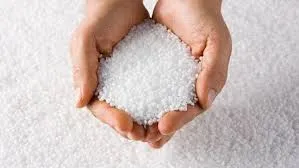Physical Treatment of Wastewater An Essential Process for Environmental Protection
The growing concerns surrounding water pollution and the depletion of freshwater resources have led to a marked increase in the need for effective wastewater treatment methods. Among the various treatment processes available, physical treatment methods play a pivotal role in the initial stages of wastewater management. This article explores the significance of physical treatment in wastewater management and its fundamental techniques.
What is Physical Treatment?
Physical treatment of wastewater refers to the processes that physically alter the state of contaminants in the water without changing their chemical structure. This method aims to remove or reduce pollutants by using physical forces and processes such as screening, sedimentation, flotation, and filtration. Unlike biological and chemical treatments, physical methods are primarily focused on solid removal and do not involve microbial or chemical reactions.
Importance of Physical Treatment
The importance of physical treatment lies in its ability to significantly enhance the quality of wastewater before it undergoes further biological or chemical treatment processes. By removing larger particles and solids, physical methods help mitigate the load on subsequent treatment stages, thereby increasing their efficiency. Moreover, these processes can effectively eliminate a variety of contaminants, including suspended solids, oils, and greases.
Physical treatment is not only beneficial in protecting the environment but also in ensuring compliance with regulatory standards. Most wastewater discharge regulations require certain pollutants to be reduced to specific levels. Physical treatment can facilitate adherence to these standards, ensuring that treated water is safe for discharge or reuse.
Common Methods of Physical Treatment
1. Screening This is typically the first step in physical treatment. Screening involves the use of screens or bar racks to remove large debris such as sticks, leaves, plastics, and other floating materials. By preventing these larger materials from entering the treatment system, screening helps protect equipment from damage and maintains efficient operation.
physical treatment of wastewater

2. Sedimentation Also known as settling, sedimentation is a process that allows suspended solids to settle at the bottom of a tank due to gravity. This is often performed in clarifiers or sedimentation basins. The settled solids form a sludge layer that can be removed and treated separately, while the clearer water on top can proceed to further treatment stages.
3. Flotation In this method, fine solid particles or oils are removed by introducing air bubbles into the wastewater. These bubbles attach to the solids, making them buoyant, and they rise to the surface, forming a scum layer that can be skimmed off. Flotation is particularly effective for treating wastewater with low-density contaminants.
4. Filtration Filtration involves passing wastewater through various filters to remove remaining solids and impurities. This can be done using sand filters, activated carbon filters, or membrane technologies. Filtration is an effective final polishing step in physical treatment, ensuring that the effluent meets the desired quality standards.
Challenges and Future Perspectives
While physical treatment methods are efficient, they are not without challenges. The generation of sludge and the need for post-treatment disposal can pose environmental concerns. Additionally, these methods may not be effective for soluble pollutants, which requires integration with biological or chemical treatment methods for comprehensive wastewater management.
In the future, advancements in technology are expected to enhance the efficacy of physical treatment processes. Innovations such as automated screening systems, advanced sedimentation techniques, and membrane filtration offer promising prospects for improving the efficiency and sustainability of wastewater treatment.
Conclusion
In summary, physical treatment of wastewater is a crucial component of effective wastewater management. By effectively removing solids and other contaminants, physical methods not only protect the environment but also lay the groundwork for more complex treatment processes. As the global demand for clean water continues to rise, the importance of optimizing physical treatment techniques will become increasingly paramount in achieving sustainable water management practices.

